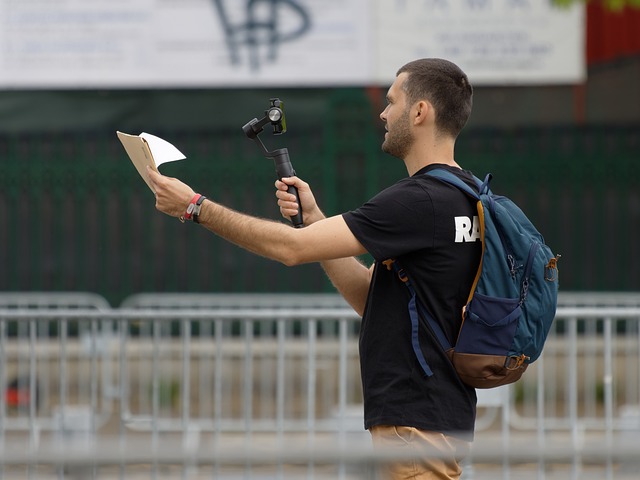By Keith Bendes, VP of Strategy at Linqia
As the dark blue smiling trucks continue making daily deliveries, Amazon’s 2023 Prime Day sales and performance data are making its rounds in the digital sphere, showcasing the impact of the summer’s biggest online deal days. While this is the ninth year Amazon hosted the ecommerce event, this year included more ways to shop and discover the steep discounts, which included invite-only deals, live shopping, and deals promoted by influencers, creators, and publishers.
Prime Day Data
Stats from Adobe’s analysis of 2023 Prime Day revealed that the two-day event totaled $12.7 billion, a 6.1% increase from the 2022 performance. Almost half (45%) of the orders placed on July 12 were made via smartphones, an increase of 3.5% from 2022.
While Adobe looked to users’ improved comfort levels with mobile purchases and the tendency to make impulse purchases with just a few taps on a screen, there may be more than one culprit responsible for the increase in sales from smartphones.
In fact, Adobe also analyzed the impact of Amazon’s marketing dollars to identify the channels that made the most significant impact on sales. The analysis highlighted that spending on affiliates and partners, which includes influencers and creators, drove the most significant lift in revenue contribution at 11%. (Email was the second most impactful at 6%, and social and display at 4% rounded out the top three.)
The affiliate and partner channel category includes individual influencers with a social audience and publishers promoting specific categories and products to drive sales. These audiences are essential for the entire lifecycle of Amazon Prime Day, which extends well beyond 48 hours and includes the days leading up to and following the sale. The overall sales and consumer behavior data lean into the shifting trends in consumer behavior, which continue to be impacted by the power of influencers.
Influencers Influencing
Ahead of Prime Day 2023, Amazon ramped up its influencer and creator focus. This focus is an extension of its affiliate program and states that Content creators participating in the Amazon Influencer Program earn affiliate commissions from Amazon for qualifying purchases. In fact, Amazon issued an influencer-focused guide to help influencers and creators make the most of their Prime Day sales (and they also offered an associate guide with similar information). The guide contained tips and tricks to effectively communicate deals and creative ways to ensure social channels were uniquely equipped to drive traffic to the Amazon marketplace and directly to particular products or shopping categories.
Amazon also offered a Prime Day checklist, a compilation of the best practices from creators during the 2022 Prime Day extravaganza, and included ways to boost sales and optimize listings before, during, and after.
But one of the biggest pushes on Amazon’s part, and a way for influencers and others to generate revenue, was reselling Amazon’s services and subscriptions. This includes recruiting new Prime members and encouraging subscribe and save opt-ins. Recruiting new members and subscribers for Amazon produces “bounties” for the referees, which are payouts and can be tracked from influencer and associate account dashboards. Some of these opportunities can generate recurring revenue, which most influencers actively seek and will generously accept (because who doesn’t want to increase their passive income stream?).
But Did Influencers Really Influence?
Based on the preliminary data, it seems that influencers positively impacted Amazon Prime Day sales. From creator content enhancing product pages for increased conversions to influencers hosting live shopping events and publishers posting hot deals to their Instagram stories, the event was almost all-encompassing and promoted at every corner of the web.
But how much influencers impacted the total sales number is still unknown. And the process is not without flaws for both the user experience and the influencers’ pockets – and it all tracks back to the links.
Remember how the stats mentioned that mobile devices were one of the biggest drivers of sales on Prime Day? In addition, in-app purchases were high in terms of volume and checkout totals. However, influencers seeking to secure bounties for memberships and subscriptions faced friction since some of the 40+ bounty opportunities were unavailable through the app. Instead, several subscriptions required influencers to pull links from a desktop or mobile browser and required a user to go through the same means.
Publishers that promoted specific deals on social media were also met with challenges in the form of broken or “unclickable” links. Some publishers claimed that adding links to their social stories created a more seamless experience, but there were issues along the way, and it was a test-and-learn process that required ongoing vigilance.
These convoluted user flows resulted in multiple clicks or taps leading the user to the conversion point, creating room for error. The experience, which begins with viewing an ad, article, or post, to actually making the purchase can – and should – be much more streamlined and simplified. The more clicks or taps required by a user, the more likely they will abandon the process or get distracted along the way.
In addition, proper attribution is still lacking, and influencers do not always see the return on their investment that they deserve. For example, if a user sees a deal on an influencer’s social media page but doesn’t use the link provided by the influencer and still makes a purchase, the influencer doesn’t get the credit. While there are ways to work toward ensuring credit is given where credit is due, the process remains flawed. Influencers, while not always happy with how brands and partners treat them, often take what they can get since they don’t have the tools or data to back their claims, and they are often at the mercy of their partnerships.
The Impact Will Continue
While Amazon Prime Day seemed to be a hit for Amazon, there is a good chance influencers aren’t celebrating a victory quite yet.
But the good news is that these programs are continuing to evolve. Amazon is planning to continue supporting influencers and creators, and there are still a few important deal days on the way, with back-to-school shopping and Black Friday just around the corner.
About the author

Labeled a leading voice at the intersection of marketing and technology by Forbes, Keith Bendes led sales and marketing strategy for some of the world’s largest and most innovative brands, including Ben & Jerry’s, Bud Light, Dove, Axe, Pepsi, Nissan, and Microsoft. Keith is also a seasoned speaker who took the stage at some of the biggest marketing events alongside some of the brightest brand thinkers, from CPG global leaders to tech icons. Currently, Keiht is the VP of Strategy at Linqia, a tech-enabled influencer agency, where he helps Fortune 500 brands plan and execute influencer campaigns, and he is the co-host of the Creator Economy podcast.


 for the latest news and job opportunities in retail tech
for the latest news and job opportunities in retail tech 